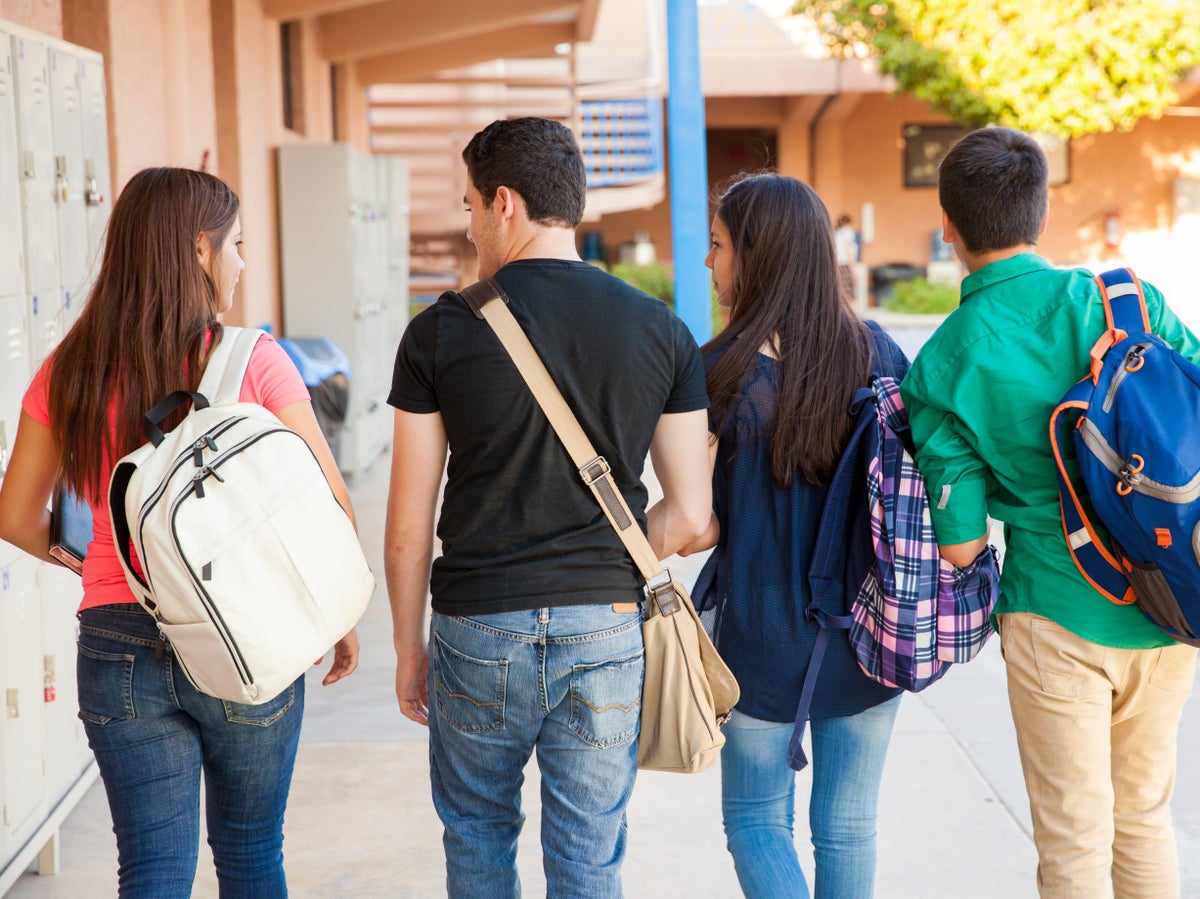
As many as one in 10 teenage girls in the US have said that they have been raped, according to a report from the Centers for Disease Control and Prevention.
High school girls are “engulfed in a growing wave of violence and trauma,” the researchers state in their report. The figures were published on Monday and show that rates of rape and sexual violence have increased while feelings of sadness or hopelessness have reached record highs.
In 2021, almost a third of high school girls said they seriously considered suicide, which is a 60 per cent increase compared to 10 years previously. The report covered the period between 2011 and 2021.
Nearly 15 per cent of teenage girls reported having been forced to have sex – a rise of 27 per cent over the course of a two-year period and the first increase since the federal agency started tracking it.
The director of the Division of Adolescent and School Health at the CDC, Kathleen Ethier, told The Washington Post that “if you think about every 10 teen girls that you know, at least one and possibly more has been raped, and that is the highest level we’ve ever seen”.
She added that she’s almost certain that the rise in sexual violence is connected to the rise in depression.
“We are really alarmed,” she told the paper.
Nearly 60 per cent of girls said they had felt sad or hopeless almost every single day for at least a 14-day period during the course of the previous year, leading to them stopping to take part in their usual activities. The CDC figures reveal that figure to be double compared to the number of boys feeling similarly and as being the highest number in 10 years.
Girls also had higher shares of alcohol and drug use compared to boys and more instances of being the victim of online bullying.
Among girls, 13 per cent had attempted to end their lives, while seven per cent of boys had done so.
Several experts pointed out that it remains unclear if the figures may be influenced by other factors, such as girls having a higher awareness of depressive symptoms compared to boys, if they’re more willing to report them, or if they’re simply doing worse than their male counterparts.
Harvard’s Graduate School of Education psychologist Richard Weissbourd told The Post that “girls are more likely to respond to pain in the world by internalizing conflict and stress and fear, and boys are more likely to translate those feelings into anger and aggression”.
He added that boys are likelier to “mask depression” and girls can be more susceptible to the pressures of social media in addition to “a culture obsessed with attractiveness and body image”.
The pandemic put additional pressure on teens, who were already struggling with these issues when Covid-19 severely limited their ability to leave their homes.
An associate professor of criminology and law studies at Marquette University, Heather Hlavka told The Post that the increased levels of domestic violence during lockdowns could have contributed to a rise in sexual assaults of teenage girls. While the CDC report doesn’t state where the assaults took place or who they were committed by, the professor noted that the rising figures could have been a mix of peer violence, violence taking place at home, or while dating.
“We see this increase from 11 percent to 14 percent of teenage girls saying that they’d been raped just between 2019 and 2021 — and that’s extremely concerning,” Dr Ethier told The Post.
The CDC report is based on figures gathered in the autumn of 2021. The Youth Risk Behavior Survey received more than 17,200 responses.
The report noted that lesbian, gay, bisexual, and questioning teenagers were likelier to be the subject of violence, likelier to be bullied online and to say they were persistently sad or hopeless, with 22 per cent having attempted suicide during the course of the previous year.
While the survey didn’t include a question about gender identity, future versions are expected to include transgender teenagers.
The report also stated that Black and Hispanic teens were likelier to avoid going to school because of concerns about safety compared to white and Asian students. Black students were also likelier to attempt suicide compared to white, Hispanic, and Asian students. White students were likelier to experience sexual violence compared to Asian, Black, or Hispanic students, the report said.
American Indian or Alaska Native teenagers were likelier than others to have been raped.
High parental monitoring – parents or another family adult knowing most of the time where a teenager is and who they are with – was reported by 86 per cent of students, almost 90 per cent of girls and 84 per cent of boys.







